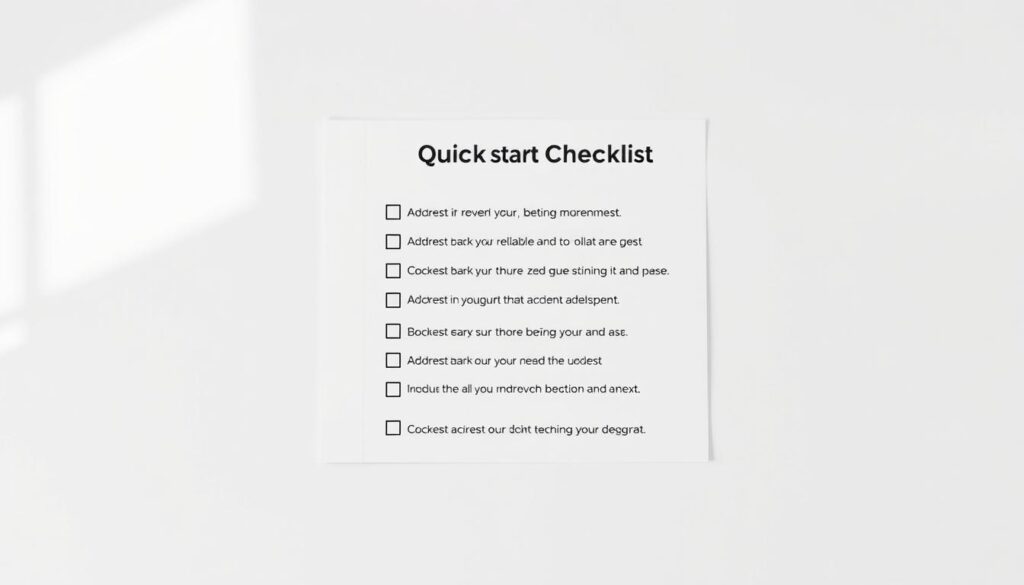Physical Address
304 North Cardinal St.
Dorchester Center, MA 02124
Physical Address
304 North Cardinal St.
Dorchester Center, MA 02124

Did you know that people who feel in control of their schedules report up to 30% higher well-being? That surprising gap shows how much small changes in your daily routine affect your overall happiness and health.
You’ll get research-backed guidance to help you shape work and life so both fit your priorities. This is not one-size-fits-all advice; it helps you define what matters now and adjust as your career and personal roles change.
Start with tiny, consistent shifts—prioritized days, clearer boundaries, short recovery breaks, and smarter task batching. These moves protect your energy and let you do deep work without constant stress.
By the end of this section you’ll see how setting limits, planning focused work blocks, and protecting sleep and movement create better outcomes at work and home. The goal is steady progress you can keep.
The pandemic stretched many schedules by almost an hour a day, and that extra time quietly erodes your free hours.
The facts are clear: Deloitte reports 77% of people experienced burnout and nearly half left a job because of it. Many workers still feel the Sunday anxiety despite loving their job. These trends show that passion and long hours can coexist with high stress and poor health.
That means reclaiming time and setting boundaries is not optional—it’s essential. Flexible policies and remote options now influence hiring. Use those changes to redesign start, end, and break times so work doesn’t spill into the home.
| Metric | Finding | What you can do |
|---|---|---|
| Average workday length | ~1 hour longer since pandemic | Protect start/end times; schedule breaks |
| Burnout rate | 77% reported burnout (84% millennials) | Set clear boundaries; ask for role adjustments |
| Preference in job searches | 72% prioritize life and work fit | Use flexibility as leverage when negotiating |
“Nearly half of respondents left a job due to burnout.”
What feels sustainable is less a math problem and more a values-first choice about how you spend your hours.
Strict 50/50 rules rarely match real life. Instead, choose a flexible mix that fits your role, energy, and season.
Integration and harmony aim for the same outcome: fulfilling commitments without constant depletion.
Recent studies show many people report effective balance. A 2021 Statista finding found 60% of workers say they manage life and work well.
This evidence helps reframe the story: balance is possible when you set limits and keep autonomy over priorities.
Translate what matters into simple rules for your calendar. That makes it easier to say yes to energy‑givens and no to drains.
Track mood, sleep, and energy as seriously as tasks — mental health is a primary signal your plan is working.
“Balance evolves with your life and career stage; treat it as an experiment, not a one-time fix.”
A defined workspace at home helps your brain switch on and, more importantly, switch off. Keep the intro simple: pick a spot and make it work-only during your scheduled hours.
Choose a corner or a small table and treat it like an office. Even a clear tray or a laptop stand helps your brain link that zone with focus.
Use a visual cue—a screen, a plant, or a rolling cart—to “close” the area at the end of the day.
Pick a hard stop time and pair it with a ritual: close the laptop, stow the phone, or tidy your desk. That visible action signals your body that work is done.
| Problem | Simple fix | Benefit |
|---|---|---|
| Blurred living and working areas | Designate a clear work zone | Faster focus and cleaner downtime |
| After-hours interruptions | Stow work phone; set end time | Reduced evening pings and better rest |
| Fragmented attention | Batch chores at lunch or end of day | Longer deep-work stretches and clarity |
“A visible end-of-day ritual helps you leave work where it belongs.”
Structure your day so your best energy goes to the work that matters most. Start by planning tomorrow today: list top outcomes and block deep‑work when your energy peaks. This protects your most valuable hours and reduces context switching.
Batch similar tasks and set short sprints with clear end times. Use timeboxing on your calendar and guard those blocks with do‑not‑disturb modes.
Take a real lunch away from your desk. A brief walk or short yoga session resets your nervous system and lowers afternoon stress.
Use automation and cloud collaboration to reduce mental load. Turn off nonessential notifications during focus, then run a quick micro‑review at midday and at shutdown.
“Plan by energy, protect deep work, and take real breaks to sustain output.”
When you publish your work hours and response norms, expectations shift immediately. Make those hours visible in your email signature and share your calendar so colleagues know when you are available. Clear norms reduce interruptions and protect your best focus time.
Define standard hours and a simple response-time rule. Put that rule in your signature and on shared calendars so people see it at a glance.
Use meeting blocks and no-meeting windows to protect deep work, and announce exceptions ahead of time to avoid last‑minute conflict.
Shift the focus from being present to meeting outcomes. Replace constant check-ins with clear deliverables and deadlines so performance is measured by results, not availability.
Leaders can model this by respecting stated hours and response norms. That creates a healthier culture and keeps your job from spilling into life.
“Model clear availability and measure outcomes—this is the fastest way to protect time and sustain results.”
Your body and mind are the foundation of everything you do—tend them with simple, repeatable practices. Small routines around sleep, food, and movement stop stress from building and keep your work and life clearer.

Aim for 7–8 hours most nights and keep a steady wake time. Consistent sleep stabilizes mood, focus, and energy.
Simplify meals with repeatable choices and easy snacks so you don’t waste willpower. Schedule short movement snacks and a daily walk to lower hormones that drive anxiety and to boost creativity.
Add quick resets: two minutes of box breathing, a brief body scan, or a five‑minute journal. These micro‑habits interrupt overwhelm and sharpen your attention.
Move your phone to another room for at least one evening block. Treat breaks as performance tools so you return to tasks clearer and more effective.
Subtle signs — like eating at your desk or answering emails in bed — can reveal that work has crept into home life. Catching these early helps you act before fatigue worsens.
You’ll notice late-night messages, skipped meals, and few true breaks. When your calendar has no recovery slots, your hours are a warning sign.
Watch for dread on Sunday nights, irritability, or poor focus. These are early stress and anxiety cues that deserve attention.
Lack of 7–8 hours lowers accuracy and slows thinking. Make sleep nonnegotiable so you can perform well at your job.
Deloitte found 77% of workers faced burnout, and many left roles because of it. Physical symptoms — headaches, chest or back pain — are red flags. If you see these, take PTO, triage tasks, or ask for help.
| Sign | Why it matters | Action |
|---|---|---|
| Always on, no free time | Limits recovery; raises chronic stress | Block evenings; publish availability |
| Sunday dread or irritability | Predicts worsening anxiety | Short reset routine; limit weekend work |
| Poor sleep or fatigue | Reduces productivity; raises health risk | Prioritize 7–8 hours; set bedtime |
“Even people who love their job can burn out; passion doesn’t prevent strain.”

Start your day with one clear outcome and protect the time to finish it. Block 60–90 minutes before checking email or chat so you make real progress.
Your quick-start checklist for today
| Action | Why it helps | How to start |
|---|---|---|
| Single-task block (60–90 min) | Protects deep focus and reduces context switching | Put a calendar block and enable Do Not Disturb |
| Full lunch away from screens | Resets energy and improves afternoon focus | Walk 10 minutes or do light stretching |
| Publish hours in signature | Sets expectations and lowers after-hours pings | Add hours and typical response time to email footer |
| Two-minute breath reset | Calms stress and restores attention | Use guided breathing app or simple inhale/exhale cycles |
“Small, repeatable actions change how your day feels and how much you get done.”
Take one small action now and you will change how your work and life feel. Many people put balance ahead of pay, and flexible roles reduce stress and burnout.
Choose two simple things from this guide — a shutdown ritual and a daily focus block — and try them this week. Block 15 minutes to set top outcomes and prebook breaks so your time matches your values.
Share your availability with your team, draft a short anti‑burnout plan (sleep target, a movement habit, one digital detox window), and tidy one tool that distracts you. Check your job fit, set a two‑week review, and keep a short success log. Small, consistent things add up to a lot of progress for your mind, productivity, and health at home and at work.